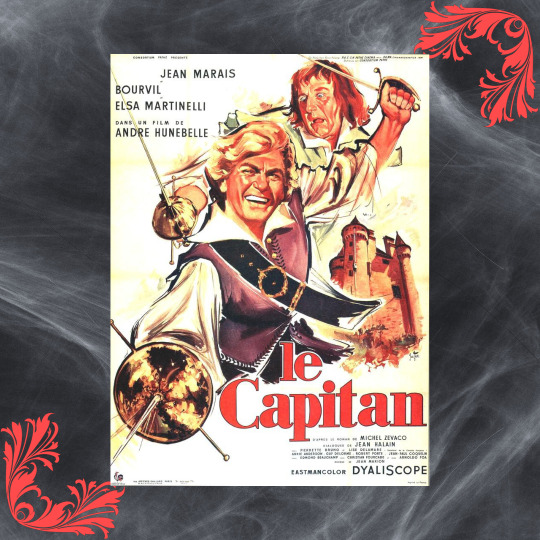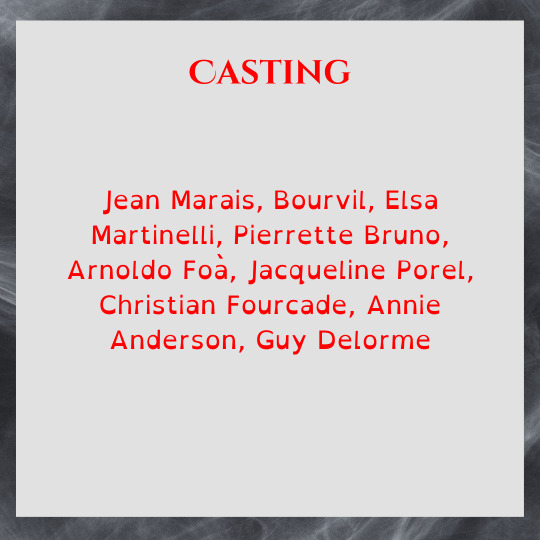#cogolin
Explore tagged Tumblr posts
Text

Cogolin | The World of Interiors
28 notes
·
View notes
Text

20140918_DP2Q3486
74 notes
·
View notes
Text

This is the way to St Tropez (1958) Route D98 at Cogolin
image by Street photographer Sabine-Weiss
5 notes
·
View notes
Text




Notre Dame des Anges à Pignans (Var). Mon lieu de prédilection, de ressourcement...
Le sanctuaire de Notre-Dame-des-Anges du massif des Maures est constitué d'une chapelle et d'un petit couvent cloîtré, situé dans le massif des Maures au-dessus du petit bourg de Pignans dans le Var.
Elle se trouve à 780 mètres d'altitude entre Cogolin et Collobrières au sud et Gonfaron au nord. Juste derrière la chapelle, se dresse une antenne-relais de radio et télévision.
Historique
Selon la légende, la chapelle Notre-Dame-des-Anges, au sud de Pignans, est fondée en 517 par Thierry Ier, fils de Clovis, en souvenir d'une victoire sur les Wisigoths, au bourg des Pins (ancien nom de Pignans).
Le pèlerinage est constant (avec une interruption au xe siècle avec l'invasion des Sarrazins.
Plus tard le sanctuaire est confié aux chanoines de saint Augustin. Ils sont chassés sous la Révolution française et le sanctuaire vendu comme bien national. La chapelle est reconstruite en 1844 et le prieuré en 1900, en utilisant les anciens murs.
La chapelle est à une nef avec une Vierge de noyer, objet du pèlerinage. Le prieuré avec son petit cloître a été restauré au xixe siècle. Parmi ses ex-votos les plus surprenants, celui de l'explorateur Jules Gérard, sous la forme d'un crocodile, est suspendu au plafond.
Selon la croyance, le pèlerinage à Notre-Dame-des-Anges guérit de la paresse. Cette chapelle et son sanctuaire abritent depuis 2001 une petite communauté de Frères Franciscains de l'Immaculée.
11 notes
·
View notes
Text

Cogolin - Golf De St Tropez
Photo credit :
brunodenise54 (IG )
3 notes
·
View notes
Text
Madame Putiphar Groupread. Book Four, Chapter V

Otto Dix, The Skat Players, 1920, oil on canvas
{ @counterwiddershins + @sainteverge }
it’s an interesting juxtaposition, the way the last chapter closed and how this one opens. It’s easy to imagine it in cinematic editing terms: We cut away from the jailer’s previous object of desire (the bust of ninon) and open the netx shot with him strolling with Deborah. A vantage point scene folllows. like those in greek tragedy where the watchman scans his lord’s domains, allowing the playwright to expand the play’s horizons beyond what’s visible to the viewer. Here it works for Deborah to situate the fortress on a larger scope, and herself beyond the walls of the fortress, its dungeons and its uncultivated grounds and enlightment style gardens. Back in Cockermouth castle, we got another scene of this type, where Deborah’s golden gaze shot golden arrows mapping her surroundings with yearning for the spots where she had found pleasure in Patricks arms (hidden spots the lovers thought unknown to the lord and his henchmen). There she dominated her surroundings, here she is scanning and trying to learn where she is at. The place has to seem daunting, land seemingly inaccesible, unless there was a friendly ship....
The jailer refuses her no information, just like she is allowed to roam freely and reside in a mockery of comfort, the name of the fort and the islands are not denied to her once she asks. This is a kind-faced jail, and perhaps mistankenly, it is assumed by Cogolin that information is not power, and it would not bring her closer to freedom.
The shadow of Death follows all through the chapter. The guards of the fortress are invalids, war veterans out of an otto dix painting. They“wait for death”(indicating the waste imperialism produces, disposable lives, useless for violence become discarded and hidden from sight, they are in a way. prisoners themselves. The prisoners are probably physically stronger than their guards but it doesn’t matter. Even if all the prisoners did not love their prison and decided to uprise, what good would that do? Can they physically leave the place? It’s irrelevant, they are welcome to try and get rid of the guards even. The crown would just send a new batch of war veterans ad infinitum)
Deborah and Cogolin sit together in his enlightened garden (Candide’s garden of escapism and individualism comes to mind) and share a pommengranate, the fruit of resurrection* The ocasionally androgynous Cogolin comments how the islands have changed sex, hab¿ving been named after male saints before and being currently named after female ones. The jailer rambles about the history of the place, Richelieu, its previous spanish masters, but Deborah is unable to concentrate in his story, the surrounding, wildtrees and the sky and the ironic contrast between the beauty of uncultivated nature vs the uses mankind had given it, call her attention more. No matter how smiling, she remarks, the island responds to the desolation of her soul. Men are bloody, and erect prisons and fortresses in paradisiac islands, and time is ruthless and one empire succeeds another, leaving the previous one’s constructions in ruins.
The jailer is jokingly disturbed by her words, he is for the first time, overtly flirtatious towards her. He calls her his dove, Deborah accepts the nickname, but remarks men had made a bird of prey out of her.
*to the Greek. The myth of Side seems eloquent, a girl called Side (aka pommengranate) kills herself to avoid being raped by her father, her blood moistens her mothers grave from which a pommengranate tree springs. Will Deborah have to defend herself from advances of the jailer? We’ll see.
2 notes
·
View notes
Text









Le Capitan.
1960.
Réalisation : André Hunebelle
Scénario :Jean Halain, André Hunebelle et Pierre Foucaud
Casting :
Jean Marais, Bourvil, Elsa Martinelli, Pierrette Bruno, Arnoldo Foà, Jacqueline Porel, Christian Fourcade, Annie Anderson, Guy Delorme
Synopsis :
Louis XIII vient de passer l'âge de la majorité, mais sa mère Marie de Médicis continue de gouverner le royaume avec son favori Concini, premier ministre, qui conspire pour éliminer le souverain et sème la terreur dans le pays. Une conjuration de grands seigneurs vise à chasser Concini et à remplacer le roi défaillant par le duc Charles d'Angoulême. Le chevalier François de Capestang, qui a été sauvé dans un combat par Gisèle d'Angoulême, est décidé à se battre pour faire triompher la justice et sauver la couronne de son roi, ainsi que la vie de Gisèle. Il part pour Paris présenter les remontrances de la noblesse de sa province.
Plaisir de lecture :
Un de mes films de cape et d’épée préférés ! Il y a tout ce qu’il faut là où il faut : action, complot, aventure, duel et évasion, romance bien dosée, humour !
Pour une fois, Louis XIII ne passe pas pour un idiot incapable.
Note : 5 chats.
Disponibilité :
Existe en DVD et Bluray.
Disponible en VOD.
Bonus Points Chats :
Pas de chats ! Mais le chien et le cheval de Cogolin font leur show.
Note : 3 chats.
3 notes
·
View notes
Text
Sidi sera distribué par Tribe Sport Group dès septembre 2024

Tribe Sport Group rajoute à ses marques, Sidi. Le chausseur italien arrive en septembre 2024 avec sa gamme cycliste dans les boutiques liées au distributeur de Cogolin. Read the full article
0 notes
Text
Taxi Nice Airport Saint Tropez, Book Taxi Airport in Advance
Taxi Nice Airport Saint Tropez Taxi Nice Airport Ramatuelle Taxi Nice Airport Gassin Taxi Nice Airport Grimaud Taxi Nice Airport Cogolin Taxi Nice Airport La Croix Valmer , Taxi Nice Airport Cavalaire sur Mer ,Taxi Nice Airport Sainte Maxime. Taxi Nice Airport to Saint Tropez
1 note
·
View note
Text
CHAMPS FERTILES
Bon anniversaire
Richard Dean Anderson
Mac Giver acteur esprit pratique
Les Marines de Cogolin
Tout va bien
Pour un fan de BB
Vendredi 26 janvier 2024
0 notes
Text

20140918_DP2Q3450
58 notes
·
View notes
Text


Jeudi 14 septembre 2023
Reconquête de l’Université d’été aux élections européennes
Juste avant l’ouverture de l’Université d’été de Reconquête, Eric Zemmour a fait le buzz en annonçant qu’il désignait Marion Maréchal comme tête de liste pour les prochaines élections européennes ; celle-ci a été invitée au JT de TFI et s’est retrouvée avec Eric Zemmour sur le marché de Cogolin dans le Var dont le maire est sympathisant de Reconquête.
L’université d’été a réuni jeudi, vendredi et samedi les jeunes, les cadres et toutes celles et ceux qui voulaient apporter leur soutien et leur temps à cette jeune formation politique notamment lors de séances de formation.
C’était l’heure du bilan avec ses actifs et son passif. On attendait dimanche le discours du président Eric Zemmour ; qu’en retenir ? D’abord qu’Eric Zemmour n’a pas perdu le sens de la formule. Pour preuves une formule déjà utilisée mais qui marche toujours : « Nous n'avons pas à nous excuser d’avoir eu raison trop tôt » ; mais aussi et surtout la formule qui fait le buzz car elle va enflammer le monde médiatique et faire réagir violemment celles et ceux qui à gauche et au centre ne sont pas hostile à la perspective d’une France africaine : « L’Afrique ne veut plus de la France, très bien, la France ne veut plus des africains. »
L’appétence pour les formules choc conduit fatalement à des excès ; Eric Zemmour sait très bien que l’immigration zéro est un leurre et il continue à marteler « plus d’immigration ».
Marine Le Pen l’a bien compris en se limitant à critiquer Emmanuel Macron, son gouvernement et sa majorité tant en termes de compétences que de capacité à apaiser notre société.
Pour autant pourra-t-elle forcer le président Bardella à ignorer celui qui reste une boussole pour certains et sa nièce et de ce fait à se priver d’une minorité d’appoint dont elle aura bien besoin si elle est élue en 2027 ?
François BAUDILLON *
0 notes
Text
Catana 40, premier catamaran d'une longue lignée

Le Catana 40 est le tout premier catamaran sorti d’un chantier qui montrait dès le début son caractère. Le catana 40 est le premier modèle sortie, en 1984, des chantiers Catana, situés au Cogolin. Dés le début, ce catamaran va marquer l’ADN d’un chantier créé par des navigateurs passionnés. Thierry Goyard et Jean Pierre Prade sont deux navigateurs qui, à cette époque, ont déjà une longue expérience de la navigation aux quatre coins du monde. Lorsqu’ils croisent la route, et les plans, de l’architecte australien Lock Crowther, grand spécialiste du multicoque, c’est le début d’une longue aventure. Le premier catamaran qui sort du chantier Catana, le catana 40, ne sera pas un énorme succès commercial. Il sera construit à 11 exemplaires. Cependant, ce catamaran marque tout de suite le caractère du chantier : proposer des catamarans marins, rapides et bien construits, à l'image d'autres chantiers comme Outremer. 33 ans plus tard, rien à changé. Le chantier est même devenu la référence dans ce domaine.
Catana 40, un catamaran marin et très véloce
Cette construction sandwich, de bonne figure, offre au catana 40 un poids de 5 tonnes, rien à voir avec un bateau actuel qui peut en peser 3 à 4 de plus. Ce poids permet d’avoir un catamaran qui va vite, même par petit temps. La plateforme, assez haute, permet de ne pas cogner quand la mer est formée. Là aussi, tous les catamarans actuels ne peuvent pas en dire autant. Enfin, au près, ses carènes et des dérives sabre permettent à ce multicoque d’avoir un excellent rendement, pour un catamaran. Pour les départs et arrivées au port, le bateau est équipé de deux moteurs diesel. Concernant l'accastillage et le gréement, il n'y a rien à redire. Le bateau était très bien équipé.
Moins de volume mais bien pensé
Comme on ne peut pas tout avoir, et la course au volume n’ayant pas encore commencé à l’époque, les espaces sont plus réduits que sur un autre catamaran de même taille. L’espace dans le cockpit n’a rien à voir avec les constructions plus modernes. Le cockpit est complètement fermé et ne laisse que de l’espace pour une table et les banquettes. Cette configuration pourra cependant plaire par son côté sécurisant. A l’inverse, sur le pont, le petit roof laisse beaucoup d’espace sur les coques et un filet permettra de profiter du soleil facilement. Le catana 40 est proposé avec 4 cabines doubles. Là aussi, si l’espace est plus compté que sur un catamaran récent, il est bien pensé. Chaque coque recevra deux salles de bains qui servent deux cabines chacune. Le carré reste lumineux et permet d’avoir un espace de vie suffisant pour partir en croisière à 4 personnes dans un confort total en recevant régulièrement des invités. La cuisine en long fait face au carré et une table à cartes est orientée vers l’avant. Pour résumer, le Catana 40 est un excellent catamaran. Très rare sur le marché du bateau d'occasion, les unités se négocient assez difficilement. Très peu d'unité ont été utilisées pour de la gestion location.
Caractéristiques Catana 40
- Longueur de coque:12.20 m - Largeur - Bau: 5.90 m - Tirant d'eau de la version standard: 2.20 m - Tirant d'eau mini: 0.95 m - Déplacement lège: 4 200 kg - Homologation: A - Nombre de cabines: 4-10 Read the full article
0 notes
Photo

“La Filanda,” Como, Italy,
Spiral staircase designed by Luca Guadagnino covered in an ombré carpet by La Manufacture Cogolin.
Credit/ Henry Bourne
#art#design#spiral staircase#Stair#stairway#stairwell#la filanda#como#federico marchetti#luca guadagnino#call me by your name#cogolin#millwork#henry bourne#staircasedesign#stairsdesign
118 notes
·
View notes